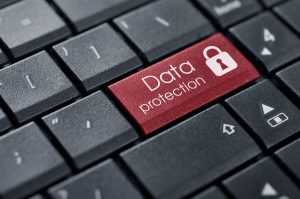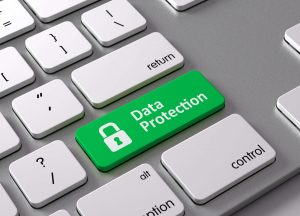People don’t achieve goals, they achieve results – Jean Oursler, a.k.a., The Queen of Results
 The June KRS Insights Breakfast featured Jean Oursler, who is a speaker, author, and one of the country’s top business consultants. Jean shared with us the RESULTS Formula, which is a new way of thinking about goal setting and growing a business.
The June KRS Insights Breakfast featured Jean Oursler, who is a speaker, author, and one of the country’s top business consultants. Jean shared with us the RESULTS Formula, which is a new way of thinking about goal setting and growing a business.
For those who missed the breakfast, we wanted to share some of Jean’s insights.
Thinking in terms of results requires a mindset change. As Jean pointed out, “It’s our Cave Man Brain – the part of our brain that’s responsible for our survival – that keeps us from achieving results. Our Cave Man Brain is in charge of the thoughts that hold us back, for example, when you find yourself saying ‘I can’t…’ or ‘I don’t have time to…’”
Her RESULTS Formula is a 7-step process that will help to change your mindset and improve your ability to get results:
R = Ready
E = End
S = Steps
U = You
L = Levels of Learning
T = Transformation
S = Success Celebration
Key Insight: You need to tame your Cave Man Brain to achieve the results you want. The RESULTS Formula can help you do this.
The inside scoop on the RESULTS Formula
R = Ready
To achieve results, you have to be ready. Most people are not. Ready means you have decided to want more and you’re willing to do what it takes to get it. When you’re ready, you know that you can’t do the same thing every day, and get different or better results. You realize that you must improve every day so that you can be more successful tomorrow. You’re ready for the challenges you will face as you seek results.
E= End
What are the end results you want to achieve? What do they look like? The best way to achieve something is to first visualize what outcomes you want. By starting with the end, you can work backward to figure out the best way to begin. “Don’t start at A. Start at Z and work back towards A, so that your Cave Man Brain doesn’t get involved,” said Jean.
S = Steps
What steps will you need to take to get to your results? Think about these as action steps. The more specific you make these action steps, the more likely you will achieve results. Then write these steps down and commit to them.
U = You
To achieve greater results, noted Jean, YOU need to be involved. You need to work on yourself and the specific skills that you need to achieve the results you desire.
L = Levels of Learning
As you start to acquire the skills you need to achieve results, you will be going through different levels of learning. During this time, you may feel uncomfortable or frustrated. That is all part of the process as you try new ideas and improve.
Key insight: Successful people never stop learning and growing. You have to grow to achieve. Your results will always be better if you’re on a growth path, compared to the person who stays stagnant.
T = Transform
When you go through levels of learning, you can’t help but be transformed into a new way of thinking and being. “Don’t blow through this phase, recognize it and view the change as positive,” commented Jean.
S = Success Celebration
When you achieve results, celebrate! Celebration is an anchor that helps your brain remember the successes you’ve achieved. Celebrate every success, no matter how big or small, because it reinforces why it is necessary to continue your lifelong RESULTS Journey.
The RESULTS Formula can be repeated. When you’re ready, you can begin to implement it over and over to achieve higher levels of success.
We’ve got your back
At KRS CPAs, our goal is to make it as easy as possible for you to get the advice and counsel needed, so you can focus on what matters most to you. The KRS Insights Breakfast Series offers timely and relevant information from experts like Jean Oursler, who can help you achieve the results you desire.
Visit our Insights page to subscribe to our newsletter and you’ll be notified about upcoming breakfasts plus other KRS news, events and resources.
As the Queen of Results, Jean Oursler is all about achieving unprecedented results at unprecedented speed, which helps her clients create and maintain market dominance. Jean was recently rated by the Women’s Presidents Organization (WPO) as its #1 facilitator across the globe. She has a Master’s degree in organizational development and is pursuing a PhD in business psychology. Her next book in the RESULTS! series, The RESULTS! Formula, is due out in 2017.

 With food trucks, farmers markets and innovative “Jersey Fresh” products popping up daily, it’s no wonder New Jersey is known as a food industry hub.
With food trucks, farmers markets and innovative “Jersey Fresh” products popping up daily, it’s no wonder New Jersey is known as a food industry hub. Managing partner Maria Rollins was a guest on the Accounting Success podcast, speaking on the topic, “
Managing partner Maria Rollins was a guest on the Accounting Success podcast, speaking on the topic, “




 Selling a vehicle outright or trading it in towards a new vehicle usually involves analyzing the economics of the transaction. However, tax factors can start to complicate things if that vehicle was used in your business.
Selling a vehicle outright or trading it in towards a new vehicle usually involves analyzing the economics of the transaction. However, tax factors can start to complicate things if that vehicle was used in your business.
 President Trump has proposed a detailed tax plan that will revise and update both the individual and corporate tax codes.
President Trump has proposed a detailed tax plan that will revise and update both the individual and corporate tax codes.

 Defining “value” can help you avoid negative consequences
Defining “value” can help you avoid negative consequences Whether large or small, organizations in every industry are vulnerable to attack. The stories that make the news headlines are usually about theft of credit card data or personal identity information. As a result, companies that don’t handle this type of data often believe they are not a target. All companies need to recognize this risk and work to detect and prevent the devastating damage cyber-attacks can cause. While developing your plan, consider your organization’s response if it does happen to you. This will help you react faster and potentially minimize the negative effect of a data breach.
Whether large or small, organizations in every industry are vulnerable to attack. The stories that make the news headlines are usually about theft of credit card data or personal identity information. As a result, companies that don’t handle this type of data often believe they are not a target. All companies need to recognize this risk and work to detect and prevent the devastating damage cyber-attacks can cause. While developing your plan, consider your organization’s response if it does happen to you. This will help you react faster and potentially minimize the negative effect of a data breach.